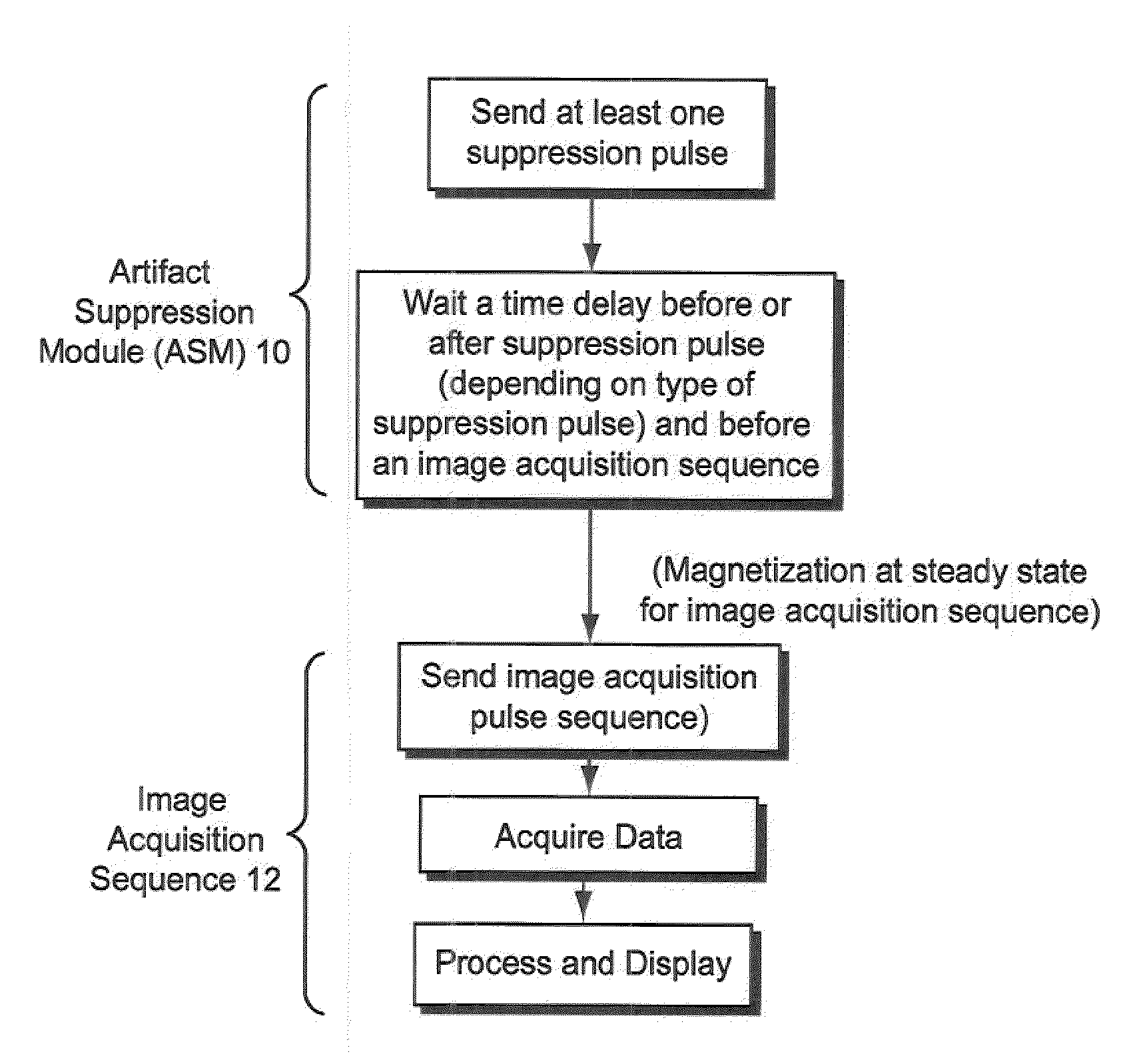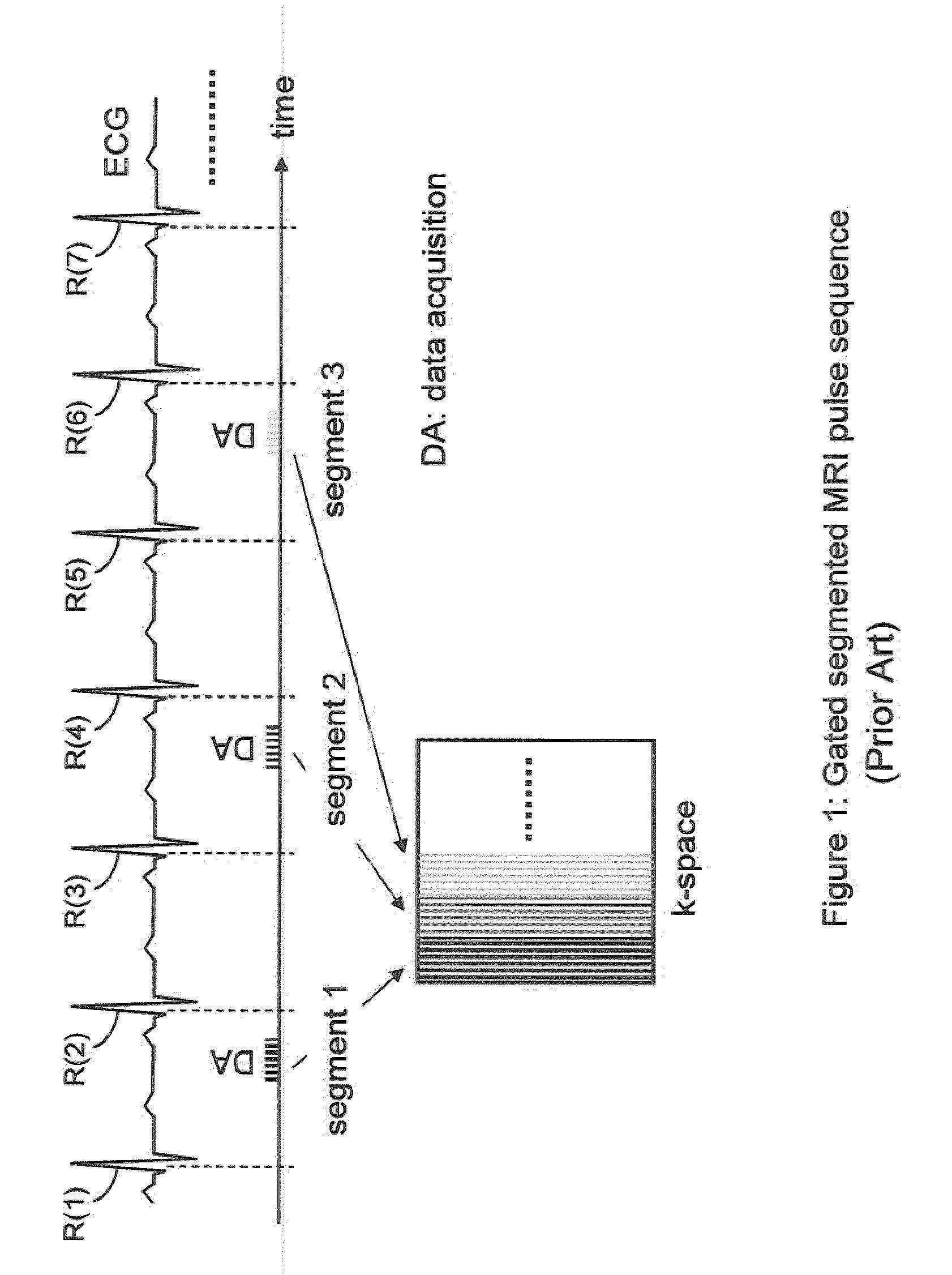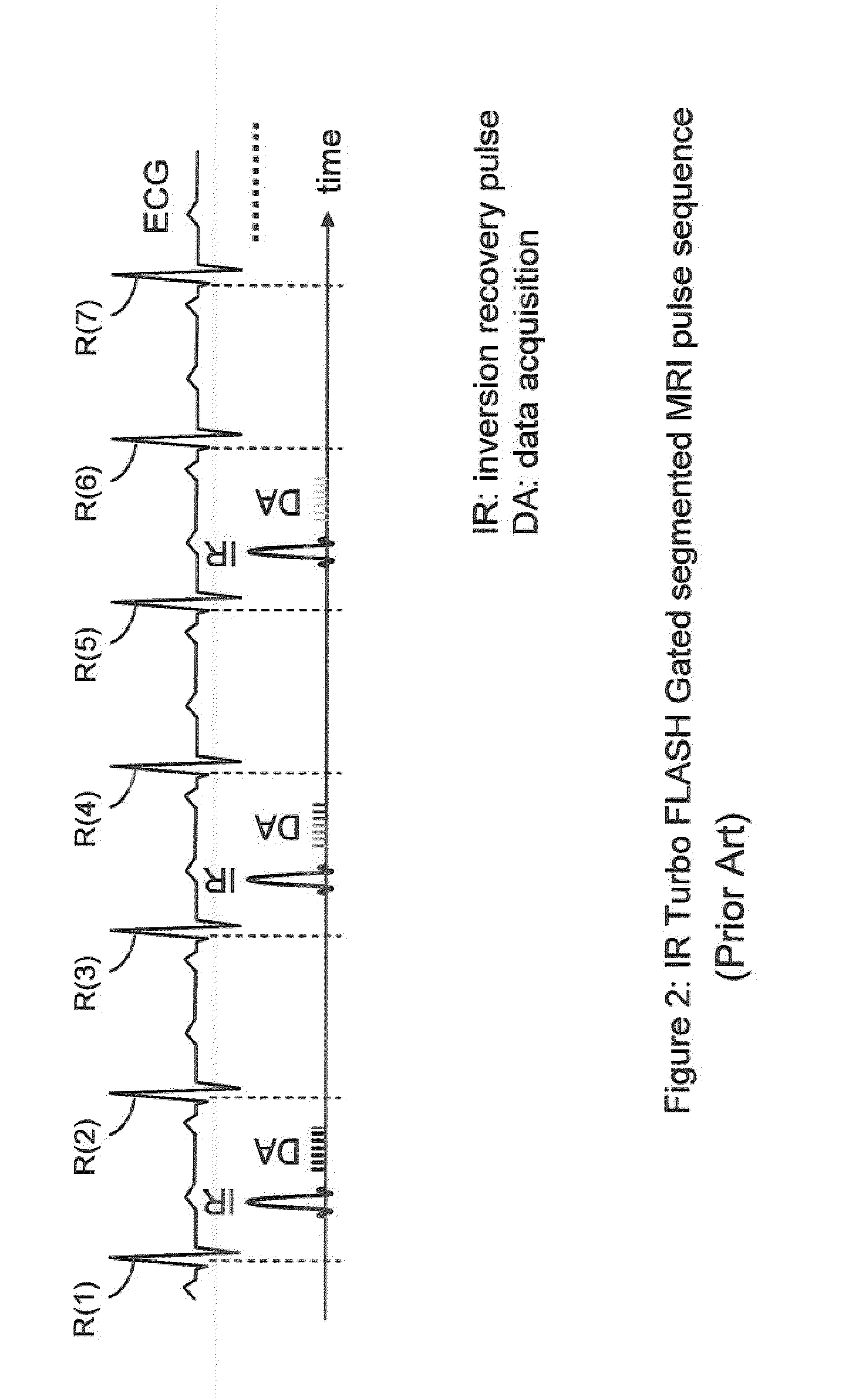Long t1 artifact suppression techniques for magnetic resonance imaging
- Summary
- Abstract
- Description
- Claims
- Application Information
AI Technical Summary
Benefits of technology
Problems solved by technology
Method used
Image
Examples
example
[0113]FIG. 11 shows an example non-limiting magnetic resonance imaging system 40 including a conventional magnet 69, RF transceiver 60, 62 and image reconstruction computer 50 which displays an image 59 on display 58. The exemplary illustrative non-limiting implementation has been programmed and successfully used on a Siemens Avanto (e.g., 1.5 Tesla) and a Siemens or Sonata scanner, but it can be implemented on any commercial cardiac or other MRI scanner irrespective of the manufacturer. No additional hardware is required, a software change (see block 52) suffices. The module could be integrated into portions of the software so that it can be played prior to all segmented inversion recovery sequences in the same way that the current dummy heart beats are used. The specified timing is applicable to MRI scanners with a 1.5 Tesla field strength, but it can be slightly modified to accommodate the 3 Tesla field strength scanners that are increasingly gaining in popularity. In fact the ex...
PUM
 Login to View More
Login to View More Abstract
Description
Claims
Application Information
 Login to View More
Login to View More - R&D
- Intellectual Property
- Life Sciences
- Materials
- Tech Scout
- Unparalleled Data Quality
- Higher Quality Content
- 60% Fewer Hallucinations
Browse by: Latest US Patents, China's latest patents, Technical Efficacy Thesaurus, Application Domain, Technology Topic, Popular Technical Reports.
© 2025 PatSnap. All rights reserved.Legal|Privacy policy|Modern Slavery Act Transparency Statement|Sitemap|About US| Contact US: help@patsnap.com



